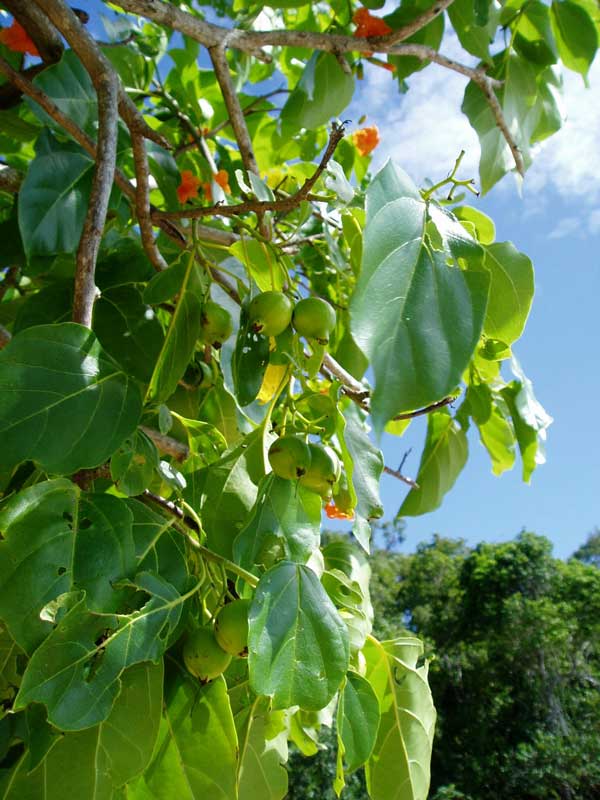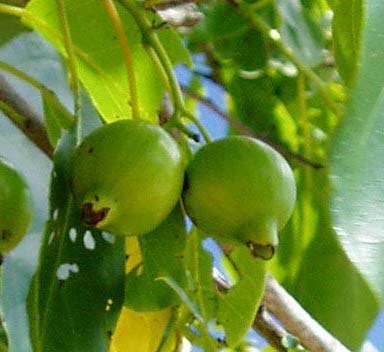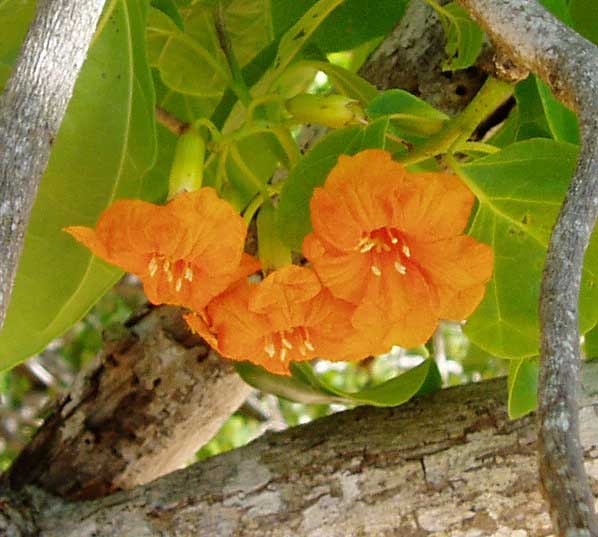Description
A small spreading tree 5-10 metres in height.
Bark
slightly rough, cream to grey with longitudinal fissures.
Leaves
Alternate, smooth, broad, ovate, blade 8 to 20 cm x 5 to 15 cm, glossy
green above, paler with tiny hairs near midrib, below, occasionally 2
lobes at base, stalk 3 to 5 cm long.
Flowers
Large, bright orange, trumpet shaped, 3.5 to 5 cm long, in groups of 6
to 20 in terminal or upper axillary inflorescence.
Fruit
Smooth, near globular, dry woody nuts, 2 to 3 cm x 1.5 to 2.5 cm, persistent
calyx at tip, pendulous, grey brown when ripe, contains 1 to 2 seeds.
Flowering
February to May or June
Fruiting
March to May
Features
Large, heart shaped glossy leaves, clusters of bright-orange
trumpet-shaped flowers, hard globular nuts
Habitat
Coastal regions, on foreshore and dunes, monsoon vine thickets on stabilised
dunes or low cliffs, above the beach, or occasionally at rear fringe of
mangroves, monsoon forests associated with lowland freshwater streams.
Cultivation
From fresh seed, adapts to moist well drained soil. A colourful small
screening tree, well suited to coastal rehabilitation
Aboriginal use
Seeds are edible, firewood
Distribution
Darwin, Arnhem land, Kimberley, north Queensland, PNG, pan tropical from
SE Asia to Mozambique |
 |



